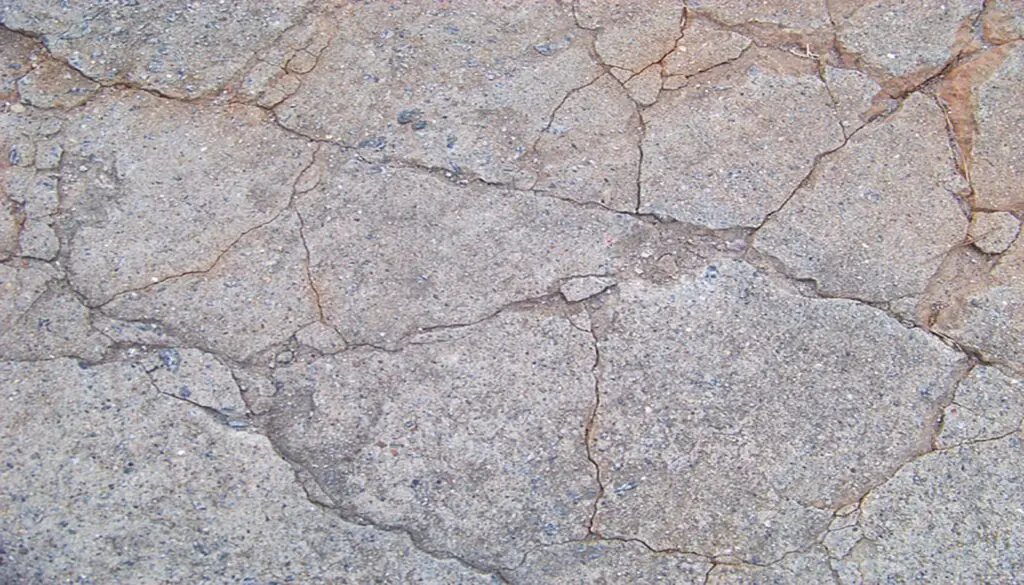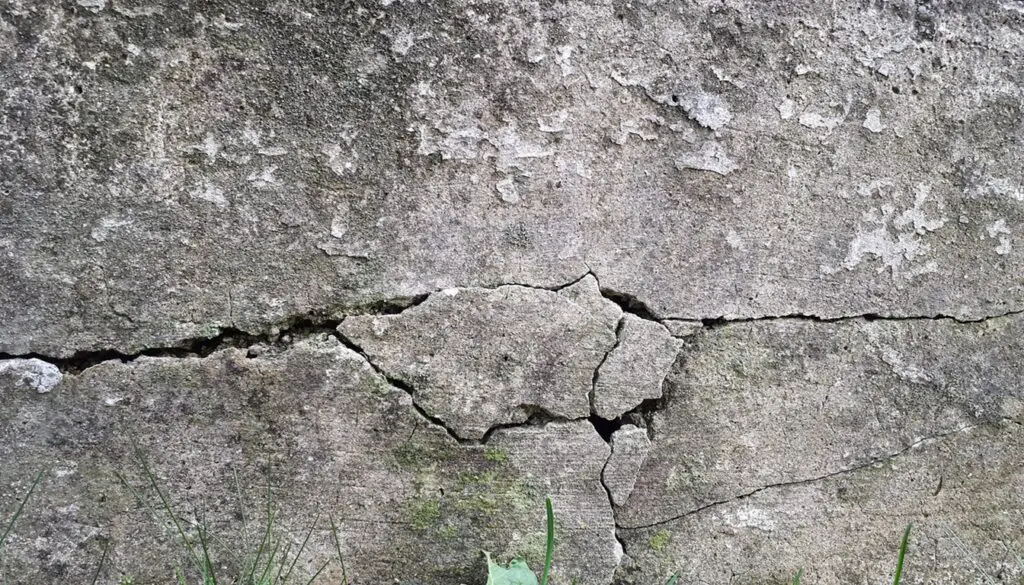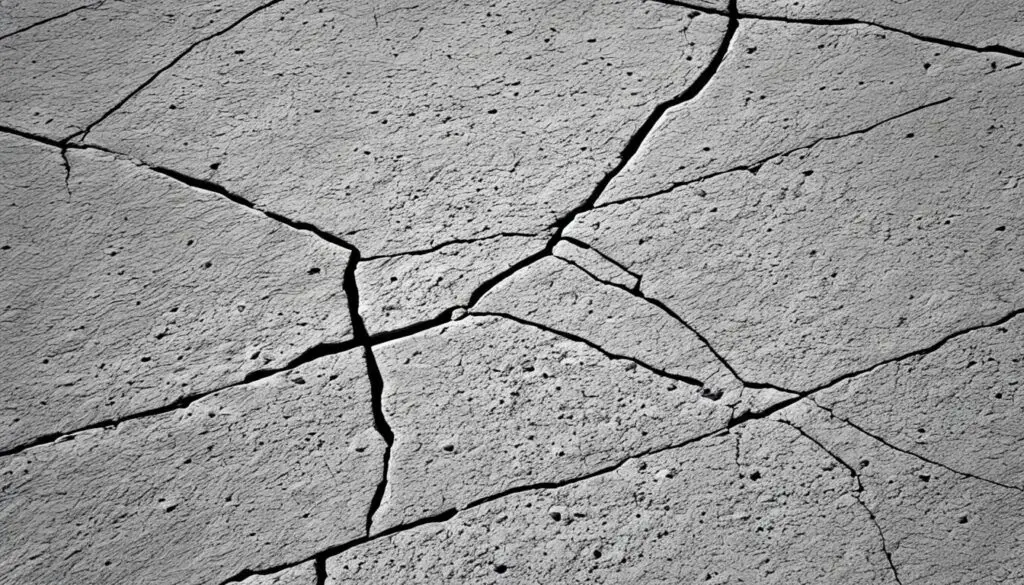Cracks in concrete are a common yet often misunderstood phenomenon. The reasons for cracks in concrete are manifold, encompassing a range of environmental factors, material properties, and construction techniques. For anyone involved with or responsible for the care of concrete—from homeowners to professionals—identifying concrete cracks and addressing concrete issues is crucial. It ensures the continued safety, appearance, and durability of our structures and surfaces. Paying due attention to concrete maintenance can stave off minor annoyances becoming major headaches.

Key Takeaways
- Identifying the various factors that cause concrete to crack is essential for effective maintenance and repair.
- Regular inspections for cracks can prevent small issues from escalating into significant structural concerns.
- Understanding the underlying reasons for cracks can lead to better construction practices and enhanced durability of concrete structures.
- Proactive maintenance is key to managing the longevity and aesthetics of concrete installations.
- By addressing concrete issues early on, property values can be preserved, and future costly repairs avoided.
Types of Cracks in Concrete
Concrete is heralded for its durability and longevity, making it a foundation for modern construction. Yet, it’s not impervious to damage, as various types of cracks can develop over time due to different factors. These fissures not only affect the aesthetic appeal but can also indicate deeper structural issues. It’s essential to identify and understand the distinctions between each crack type to facilitate timely maintenance and repair.
Plastic Shrinkage Cracks In Concrete
These are typically observed in the early stages of the concrete’s life. Plastic shrinkage cracks develop as the concrete dries too quickly after being poured, leading to tension on the slab’s surface before it has gained enough strength for resistance.
Expansion Cracks In Concrete
Expansion cracks occur when concrete expands in response to temperature increases or due to the absorption of moisture, pushing against adjacent structures. With no space to accommodate this growth, the concrete cracks to relieve pressure.
Hairline Cracks In Concrete
Hairline cracks may seem inconsequential, yet they are often early signs of issues needing closer observation. These hairline cracks arise due to minor contractions in the concrete as it cures or from thermal fluctuations, appearing fine and superficial.

Shrinkage Cracks In Concrete
As concrete hardens and dries, it undergoes a reduction in volume, inevitably leading to shrinkage cracks. These cracks typically form in a three-dimensional pattern and can extend throughout the depth of the concrete slab.
Settlement Cracks In Concrete
Uneven settling of the ground beneath the concrete, or not preparing the substrate properly, results in settlement cracks. These are more pronounced and can indicate serious issues if they allow water to penetrate the slab, exacerbating the uneven settlement.
Structural Cracks In Concrete
When you notice large and gaping fissures, those are likely structural cracks, which point to profound distress within the concrete element. They jeopardize the structure’s load-bearing capacity and should be addressed with urgency.

| Type of Crack | Characteristics | Potential Causes |
|---|---|---|
| Plastic Shrinkage | Surface cracks appear while concrete is still in its plastic state | Rapid drying, low moisture content |
| Expansion | Cracks due to the swelling of concrete | Temperature fluctuations, moisture ingress |
| Hairline | Fine, superficial cracks | Minor shrinkage, thermal changes |
| Shrinkage | Network of cracks throughout the concrete | The curing process, volume reduction |
| Settlement | Noticeable separation in concrete segments | Uneven substrate, soil movement |
| Structural | Large cracks affecting the concrete’s integrity | Overloading, design deficiencies |

Factors That Contribute to Cracks In Concrete
Welcome to an insightful exploration into the common issues that compromise the integrity of concrete, leading to the development of cracks. While various elements contribute to these issues, some stand out as particularly critical in the upkeep of concrete structures. These include factors such as temperature changes, rapid drying of the concrete, and chemical reactions, along with poor construction practices, and errors in design & detailing.
Temperature Changes and Rapid Drying
The durability of concrete can be significantly affected by temperature changes. When concrete undergoes rapid thermal expansion and contraction, it can create stresses that the material is unable to withstand, resulting in cracks. In addition to thermal stresses, the rapid drying of the concrete during the curing process often leaves it prone to plastic shrinkage cracks In concrete, highlighting the importance of proper moisture retention during the early stages of concrete setting.

Understanding these dynamics is vital for ensuring effective crack management in concrete structures.
Chemical Reactions
Concrete is not just a physical mix but also a complex chemical one. Specific chemical reactions within concrete can lead to expansive forces that are strong enough to cause cracking. Instances involve interactions between aggregates and alkali materials in the cement, or through external sources like deicing salts, which can induce a reaction called sulfate attack. These occurrences necessitate careful material selection and a keen eye for reactive substances present during construction.
Poor Construction Practices
Unfortunately, poor construction practices are a primary culprit behind weakened concrete slabs. This includes improper preparation of subgrade, inadequate compaction, or the misapplication of water during the mix, which leads to a decrease in strength and an increased propensity for cracks. A lack of proper control joints can further exacerbate the problem, allowing no room for concrete to expand and contract without cracking.

Design and Detailing Errors
When discussing structural integrity, the significance of design and detailing errors cannot be overstated. From inaccurate load predictions leading to construction overloads to insufficient reinforcement placement, these failures in planning reflect negatively on the longevity of a concrete structure. Early form removal is another factor that contributes to premature loading and related cracking. To avoid such scenarios, it’s crucial to have detailed and accurate designs, factoring in all loads and stresses that the concrete will have to endure throughout its life.
With these insights into the various factors causing concrete cracks, professionals and enthusiasts alike can better understand how to prevent or address these issues, ensuring the longevity and safety of concrete structures.
The Impact of Environmental Conditions on Concrete Durability
Concrete, while known for its strength and durability, is also vulnerable to the relentless effects of environmental conditions. The deterioration of concrete structures under the influence of environmental stressors is a major concern for civil engineers and construction professionals alike. Key among these stressors is the corrosion of concrete, a process that can severely compromise a structure’s integrity over time.

The factors affecting concrete durability are numerous, each playing a pivotal role in the longevity of concrete installations. Varying temperatures, for instance, can induce a cycle of expansion and contraction in concrete that over time may lead to cracking. This, coupled with the environmental conditions on concrete, such as the presence of moisture and pollutants, can expedite the corrosion of reinforcing steel within these structures.
Let’s examine the typical environmental factors that contribute to this issue:
- Exposure to chlorides, commonly found in deicing salts, can trigger a chemical reaction that corrodes steel rebar within concrete.
- High levels of atmospheric carbon dioxide can lead to carbonation, a process that lowers the pH of concrete and begins to dissolve the steel’s protective oxide layer.
- Water and oxygen, essential for the corrosion process, are commonly present due to weathering effects and can permeate through microcracks.

These environmental elements do not act in isolation; rather, they often work in concert, accelerating the wear and challenging the resiliency of concrete across different climates and exposures. From the freeze-thaw cycles experienced in colder States to the wet, humid conditions prevalent in coastal areas, every setting presents a unique set of challenges.
Understanding these mechanisms is crucial for developing strategies to improve the service life of concrete structures. It underscores the need for careful material selection, protective coatings, and design adaptations that mitigate the potential for corrosion, thereby safeguarding our infrastructure for future generations.
Preventative Measures and Remedies for Concrete Cracks
Ensuring the longevity of concrete structures hinges on preventing the formation of cracks or, when they do appear, implementing effective repair strategies. Understanding the tolerance levels for acceptable crack widths and applying appropriate preventative measures for cracks In concrete are foundational steps in preserving structural integrity. Critical to such measures are the proper design and placement of control joints as well as techniques that help minimize elastic deformation and creep that could lead to stress and cracking over time.

Addressing Acceptable Crack Widths
Identifying what constitutes an acceptable crack width is essential for determining the urgency and method of repair. The American Concrete Institute provides guidelines on the maximum widths for cracks in various environmental exposures, which serve as a benchmark for assessing the significance of observed cracking.
The Essential Role of Control Joints
Control joints are implemented into concrete slabs and walls as a means of managing stress and accommodating potential movement. They are strategically placed weak points that allow the material to crack in a controlled and predictable manner, thereby mitigating unsightly and random cracking throughout the concrete. This is a prime example of remedies for cracks In concretes that work to prevent structural damage.
Strategies for Minimizing Elastic Deformation and Creep
To safeguard against the risks associated with elastic deformation and creep, engineers enact several design measures. Opting for high-quality materials, incorporating reinforcements, and accounting for loading conditions are crucial factors. This systemic approach to minimizing internal stresses significantly contributes to the health of concrete structures.

| Preventative Strategy | Benefits | Considerations |
|---|---|---|
| Proper Material Selection | Reduces risk of shrinkage and expansion | Cost, availability, performance characteristics |
| Control Joint Implementation | Directs cracking to designated areas | Placement patterns, joint spacing |
| Reinforcement Utilization | Increases tensile strength and durability | Type of reinforcement, correct installation |
| Proper Curing Process | Aids in strength development and moisture retention | Curing conditions, duration |
| Load Management | Prevents overstressing and deformation | Load calculations, timing of load applications |
Conclusion
Through careful examination and a thorough understanding of the reasons for cracks in concrete, we can appreciate the essential role that effective concrete crack management plays in the health of our built structures. Whether it’s a residential driveway or a major urban edifice, the importance of addressing cracks In concrete cannot be understated. It is not just a matter of aesthetic appeal; it’s a fundamental concern for safety and durability that ensures our structures stand the test of time.
By identifying the type of crack and investigating its underlying cause, property owners, engineers, and construction teams can implement the right strategies to either prevent or remedy these occurrences. From incorporating control joints to selecting the correct materials that minimize the risk of shrinkage, every measure contributes to a longer lifespan and enhanced performance of concrete structures.
As we conclude, let’s emphasize the value of vigilance and timely intervention. Regular monitoring, coupled with a responsive approach to the first signs of distress in concrete, can forestall more severe damage. It fosters not only a safer environment but also saves on potentially costly repairs down the line. In essence, by recognizing and acting upon the earliest indicators of compromise, the integrity, functionality, and beauty of our concrete infrastructure endure, solidifying the foundations of our everyday lives.
Also, Read,
FAQ
What are the common reasons for cracks in concrete?
Cracks in concrete can arise from various issues, including shrinkage as the material dries, environmental influences such as temperature changes, errors during construction such as the use of an improper concrete mix, and chemical reactions affecting the concrete’s integrity.
Can you identify the different types of cracks in concrete?
Yes, the primary types of cracks include plastic shrinkage cracks that form when concrete dries too quickly, expansion cracks resulting from volume increases, hairline cracks that are thin and superficial, shrinkage cracks due to volume decrease as concrete cures, settlement cracks from uneven settling of the ground, and structural cracks which may jeopardize a structure’s stability.
How do temperature changes lead to concrete cracks?
Temperature fluctuations can cause the concrete to expand and contract, leading to stress and cracking, especially when the material experiences rapid temperature changes or extreme weather conditions.
What construction practices can prevent cracking in concrete?
Good construction practices to prevent concrete cracking include the use of the correct water-to-cement ratio, ensuring the concrete is properly mixed and cured, incorporating control joints to manage the cracks, and avoiding early formwork removal and construction overloads.
What impact do environmental conditions have on concrete?
Environmental factors such as exposure to moisture, pollutants, and temperature variations can lead to the corrosion of reinforcing steel within concrete, which often results in cracks and spalling that reduce the material’s durability and longevity.
What are acceptable crack widths for concrete structures?
Acceptable crack widths vary depending on the structure’s use and exposure to environmental factors, but generally, hairline cracks up to about 0.1 mm are considered acceptable for most non-critical aesthetic applications, while structural integrity concerns typically arise at wider measurements.
How do control joints help prevent cracks in concrete?
Control joints are planned fractures in concrete that allow it to move and accommodate stress without causing random cracking. They are essential for managing the natural contraction and expansion of the material.
What strategies help minimize elastic deformation and creep in concrete?
Reducing the risks associated with elastic deformation and creep can be achieved by carefully selecting high-quality concrete materials, employing the right mix design, and ensuring that the structural system is designed to manage the loads effectively over time.
Cracks In Concrete



